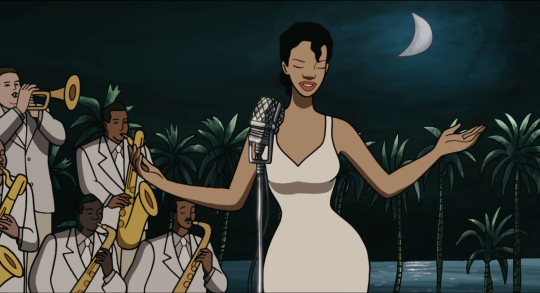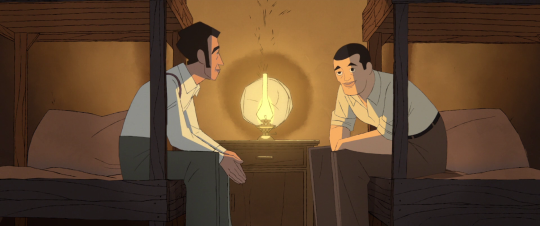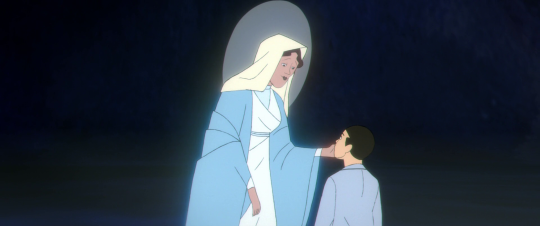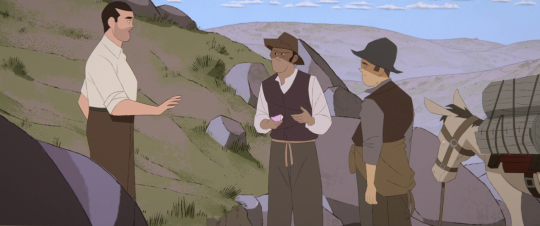originally posted at https://canmom.tumblr.com/post/628241...
Thursday has snuck up on us once again, which means it’s time for animation!
We’ve sort of fallen into a pattern the last few weeks: I spend two weeks indulging in my weebish nature, and then my friends prevail upon me to give the rest of the world a chance on the third. (This is only a mild exaggeration). For tonight, I have my friend Elaine to thank, for first getting the idea of looking at film award shortlists for ideas, and secondly for picking out a lot of interesting-looking films by theme.
So what’s tonight about? We’re going to check out a few films from Spain - a couple of films which have a surprising amount of narrative (if not so much thematic) parallels. We could describe the theme as Spanish films with realistic drawing styles, centred on artists, set prior to major political upheavals, containing a producer called Ramón who’s best friends with the MC. But that would be a bit of a mouthful!

First up, we have Chico and Rita (2010), directed by Fernando Trueba, Javier Mariscal, and Tono Errando.
This film is, most of all, a celebration of 1940s Cuban jazz and the world around it. It portrays the rather dramatic lives of two gifted musicians who meet in Havana, 1948 - Chico, a pianist, and Rita, a singer, as they get together and break up, find success, face the racism of 50s NY and the exploitative music and film industries, and… well, I won’t give away the ending!

The film’s animation style is probably closest to French animation, albeit with a somewhat more realistic drawing style - simplified, but proportionate, with comparatively subtle ‘acting’ (except for a brief dream sequence in the middle of the film). It’s probably got some of the most carefully observed depictions of musical performances outside of KyoAni’s work - I’m p curious what my musician friends are going to think of it…
And the setting! I’m usually skeptical of the use of CGI with traditional animation, but they have found a good balance here, using painted textures to help the CG street scenes fit the rest of the style, while allowing much more dynamic camera movements.
And of course, something should be said about the soundtrack! As well as its historical pieces, the film’s new compositions are scored by Cuban composer, pianist and band leader Bebo Valdés, three years before his death at age 94. Valdés was a significant performer himself in Havana during the time depicted in the film, and he’d worked with director Fernando Trueba on a previous documentary.

The main issue I have with this film is that, in the first half in particular, our main character Chico comes across very poorly - first he’s pushy, then he’s constantly distrustful of Rita, to the point that I was wondering what she even sees in him! It’s not that this is an implausible characterisation, it just makes it hard to sympathise with him… but by the end, the film had won me over to its story despite its heterosexualisms.
The other content warnings I would want to make: would be that there’s one scene with full nudity, and that much of the film is set in racially segregated New York. To my eye, it’s portrayed carefully without any gratuitous scenes of racist violence, but I’m maybe not the best qualified to judge that.
Chico and Rita are fictional, but they do run into some real historical musicians, such as Chano Pozo. By contrast, the second film I’m going to show is entirely based on real people: a story about the leftist surrealist filmmaker Louis Buñuel, best known for Un Chien Andalou.

Unlike his fellow surrealist Salvador Dalí, who became a support of Franco’s fascist regime, Luis Buñuel was genuinely committed to using Surrealism for revolutionary purposes - something which did not win him a lot of friends, especially given that his methods were sometimes kinda ethically questionable, as we’ll see.
The animated film we’re going to watch, Buñuel in the Labyrinth of the Turtles, (2018, directed Salvador Simó), is a somewhat fictionalised account of how Buñuel shot the documentary Land Without Bread in the early 1930s, not long before the outbreak of the Spanish Civil War.

After his first feature film L’Age d’Or pisses off the Catholic Church enough that he loses the support of his Catholic patrons, Buñuel lacks funds to make another film. He unexpectedly catches a break when his friend Ramón Acin, a sculptor and noted anarchist, wins the lottery. Ramón follows through on his promise that, should he win the lottery, he’d fund Buñuel’s next film - and the two head to the deeply impoverished Las Hurdes region of Spain.
At the time, it was popular for European filmmakers to go to Africa, and make ‘documentaries’ about how poor and backwards the people were. Part of Buñuel’s point in making the film was, apparently, to show that one did not have to leave Spain to find people surviving crushing poverty. As this film tells it, he and Ramón are at first united in the hope that their documentary might help Las Hurdes.

However, Buñuel’s methods start to alienate his friends. Buñuel is disturbed by vivid nightmares, from surreal images of Dalí (whose shadow he can’t escape) to visions of his parents, sometimes cast in religious imagery. He wants to show images of the death that haunts the villagers in Las Hurdes, but without the budget to wait for terrible events to film, he takes matters into his own hands, killing a number of animals to show their deaths on film. And when he starts to wear a nun’s habit because of a religious vision, he also alienates the mayor of Las Hurdes.
As their money dwindles, Ramón becomes increasingly convinced that Buñuel is no different from someone like Dalí: a rich kid who just wants to shock, not at all interested in creating a genuine documentary. Again, I won’t give away the resolution, but I think the film is, ultimately, positive about Buñuel’s legacy: it acknowledges that much of the documentary (or parody-documentary) was staged, but seems to argue that this was done for sincere, artistic reasons, and a genuine care for the people of Las Hurdes.
The people of Las Hurdes don’t get quite as much of a voice. I came across an article which says that Buñuel’s film is seen very poorly there today; in this film, they appear to be as poor and hungry as Buñuel portrayed them. He meets a dying child, and with the lack of medicine in reach, nobody can help her. While most of the film’s events are attested, whether they fit the narrative portrayed is not clear.

Much of the star here is gorgeous painted backdrops of rural Spain, and a haunting soundtrack. The characters are stylised, but clearly real likenesses of the people portrayed. The animation, broadly on 2s, is clean, characterful and believable - and the colouring has some really pretty, desaturated palettes.
The film shows a number of clips from Land Without Bread, including the unsimulated animal deaths, so big content warning for IRL animal cruelty. It’s a bit of a weird case because, while it was not done to make this film, it was done to make the film that inspired this film… and in any case I 100% would understand if you don’t want to see that.
The film ends with a tragic historical note: Ramón Acin was executed by Franco in the early days of the Civil War. Buñuel was in America at the time, and was warned that if he was to return to Spain, he would be killed as well.

As for the film it’s about… Land Without Bread was first screened in 1932, only to be banned shortly thereafter in Spain for defaming the country. Eventually, it was allowed to be screened without Ramón’s name; his name would only be restored to the credits decades later. And the film, and the controversy it provoked, did seem to have helped the region of Las Hurdes to some degree in the short term, only for things to get a lot worse during the Franco years.
Both these films have some troubling aspects, but I think they’re both more than interesting enough that I’m quite excited to share them and see what you all make of it. Spanish animated films seem to be very much on the arty side - other ones I plan to watch in the future include Birdboy: The Forgotten Children (a dark surreal story about animal kids on a post-apocalyptic island) and Wrinkles (about a group of old people in a prison-like nursing home). And their animated short films are if anything even darker! Depending on mood, I may show a few.
As usual, we’ll wrap up with a selection of animated music videos collected by my friends. We’re currently on Elaine’s very impressive list, featuring a lot of different music and animation styles.
The time will be 7pm UK time (about 5 hours from this post), the place will be twitch.tv/canmom, and I’m looking forward to seeing you all there!
Comments